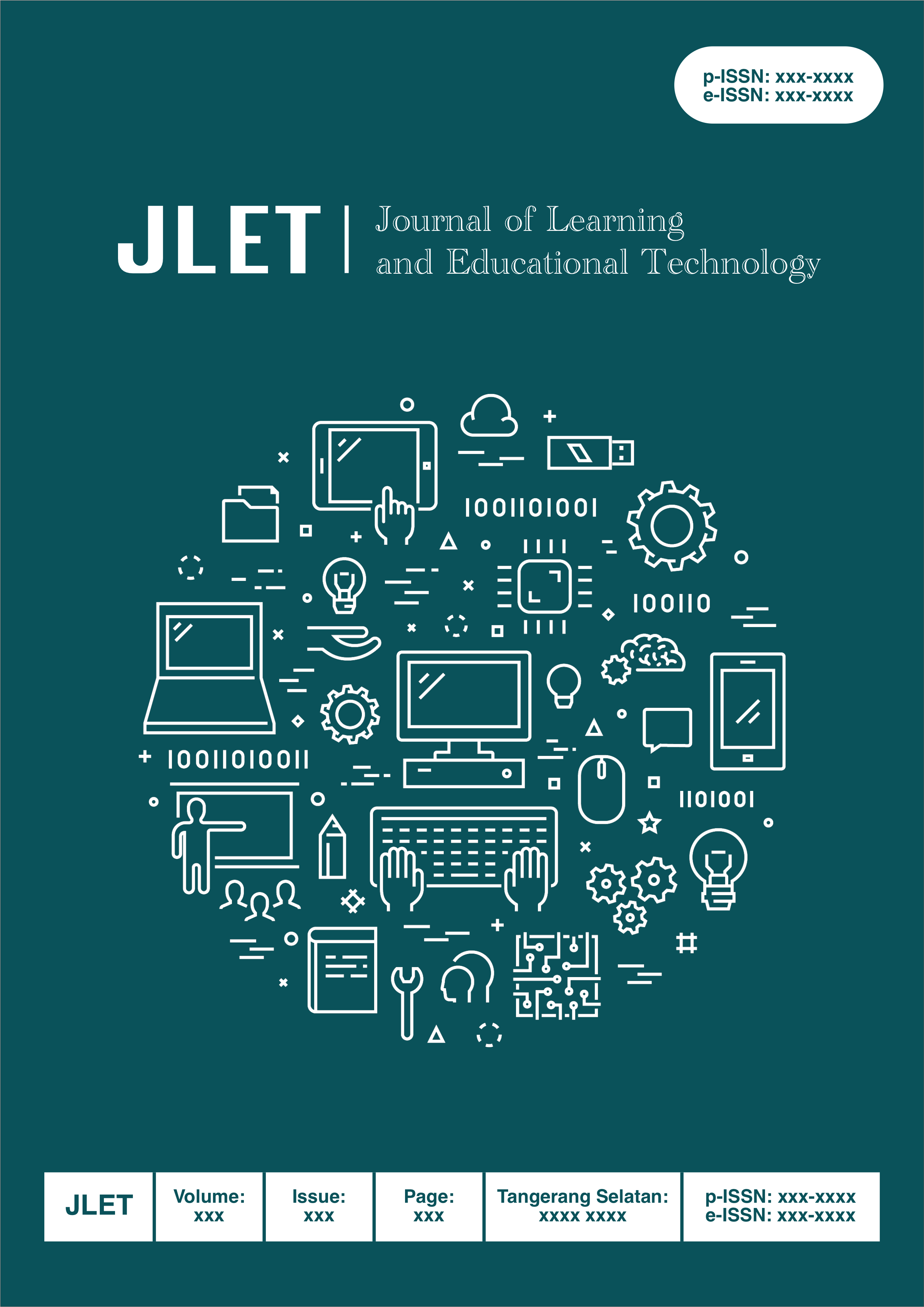Pengembangan Asesmen untuk Mengidentifikasi Kemandirian Menulis Permulaan Siswa dengan Hambatan Fisik Fase A
Keywords:
Hambatan Fisik, Instrumen Asesmen, Menulis Permulaan, Sekolah Luar BiasaAbstract
Penelitian ini bertujuan untuk mengembangkan dan menguji validitas instrumen asesmen pramenulis yang dirancang khusus untuk mengidentifikasi tingkat kemandirian menulis permulaan pada siswa dengan hambatan fisik fase A di Sekolah Luar Biasa (SLB). Penelitian ini menggunakan model pengembangan 4D yang mencakup empat tahap: pendefinisian, perancangan, pengembangan, dan penyebarluasan. Hasil penelitian menunjukkan bahwa instrumen asesmen yang dikembangkan mampu mengidentifikasi dengan baik area-area di mana siswa masih memerlukan bantuan, terutama dalam memegang alat tulis, menebalkan huruf, serta menyalin huruf dan suku kata. Observasi dan wawancara dengan guru kelas juga mengkonfirmasi bahwa siswa masih mengalami kesulitan dalam memberikan spasi yang konsisten antar suku kata dan dalam mengeja kata-kata yang lebih kompleks. Instrumen ini tidak hanya berfungsi sebagai alat evaluasi yang valid, tetapi juga sebagai panduan diagnostik bagi guru untuk menyesuaikan strategi pembelajaran yang lebih sesuai dengan kebutuhan individu siswa. Dengan demikian, penelitian ini berkontribusi dalam pengembangan alat evaluasi pendidikan yang responsif terhadap kebutuhan khusus siswa dengan hambatan fisik, sekaligus mendukung pencapaian kemandirian dan keberhasilan akademis mereka.
References
Al Otaiba, S., & Fuchs, D. (2021). Who Are the Young Children for Whom Best Practices in Reading Are Ineffective? An Experimental and Longitudinal Study. Journal of Educational Psychology, 101(1), 3-20.
Berninger, V. W., & Richards, T. (2010). Interdisciplinary Frameworks for Schools: Best Practices for Serving All Students. New York, NY: Guilford Press.
Berninger, V. W., Richards, T., & Abbott, R. D. (2020). Does Training in Alphabetic Principle Contribute to the Development of Reading, Writing, and Spelling Skills?. Developmental Neuropsychology, 37(4), 475-490.
Brookhart, S. M. (2013). How to Create and Use Rubrics for Formative Assessment and Grading. Alexandria, VA: ASCD.
Brookhart, S. M. (2017). How to Create and Use Rubrics for Formative Assessment and Grading. Alexandria, VA: ASCD.
Fine, M. (2005). Motor Skills Development and its Relationship to Writing Skills in Children. Journal of Educational Psychology, 97(2), 345-356.
Graham, S., & Harris, K. R. (2000). The Role of Self-Regulation and Transcription Skills in Writing and Writing Development. Educational Psychologist, 35(1), 3-12.
Gronlund, N. E. (1981). Measurement and Evaluation in Teaching (4th ed.). New York, NY: Macmillan.
Jette, A. M., Haley, S. M., & Ni, P. (2003). Comparison of Functional Status Tools in Post-Acute Care Settings. Journal of the American Geriatrics Society, 51(5), 751-759.
Khan, S., Price, J., & Haque, S. (2018). Inclusive Education for Children with Physical Disabilities: Challenges and Strategies. International Journal of Special Education, 33(4), 456-468.
Kim, Y. S. G., Al Otaiba, S., & Wanzek, J. (2021). Reading Instruction for Students with Learning Disabilities: The Effectiveness of Peer-Assisted Learning Strategies. Learning Disability Quarterly, 44(1), 23-35.
Popham, W. J. (2017). Classroom Assessment: What Teachers Need to Know. Boston, MA: Pearson.
Puslapdik. (2022). Capaian Pembelajaran Bahasa Indonesia Fase A di SLB. Jakarta: Kementerian Pendidikan dan Kebudayaan RI.
Rosenbaum, P., Paneth, N., Leviton, A., Goldstein, M., & Bax, M. (2007). A Report: The Definition and Classification of Cerebral Palsy. Developmental Medicine & Child Neurology, 49(s109), 8-14.
Santos, R., Silva, A., & Barros, J. (2022). Motor Skills Interventions and Their Impact on Children with Disabilities: A Systematic Review. Journal of Developmental and Physical Disabilities, 34(2), 325-344.
Smith, T., Jones, A., & Brown, L. (2019). Educational Strategies for Students with Physical Disabilities. Journal of Special Education, 45(3), 210-225.
Thiagarajan, S., Semmel, D. S., & Semmel, M. I. (1974). Instructional Development for Training Teachers of Exceptional Children: A Sourcebook. Minneapolis, MN: Leadership Training Institute/Special Education, University of Minnesota.
Treiman, R., & Kessler, B. (2020). How Children Learn to Write Words. Child Development Perspectives, 14(1), 34-39.
World Health Organization (WHO). (2021). International Classification of Functioning, Disability, and Health: Children & Youth Version. Geneva: WHO Press.
Downloads
Published
Issue
Section
License
Copyright (c) 2024 Manggalagita Teofilus Seisoria, Wiwik Dwi Hastuti, Umi Safiul Ummah (Author)

This work is licensed under a Creative Commons Attribution-ShareAlike 4.0 International License.




